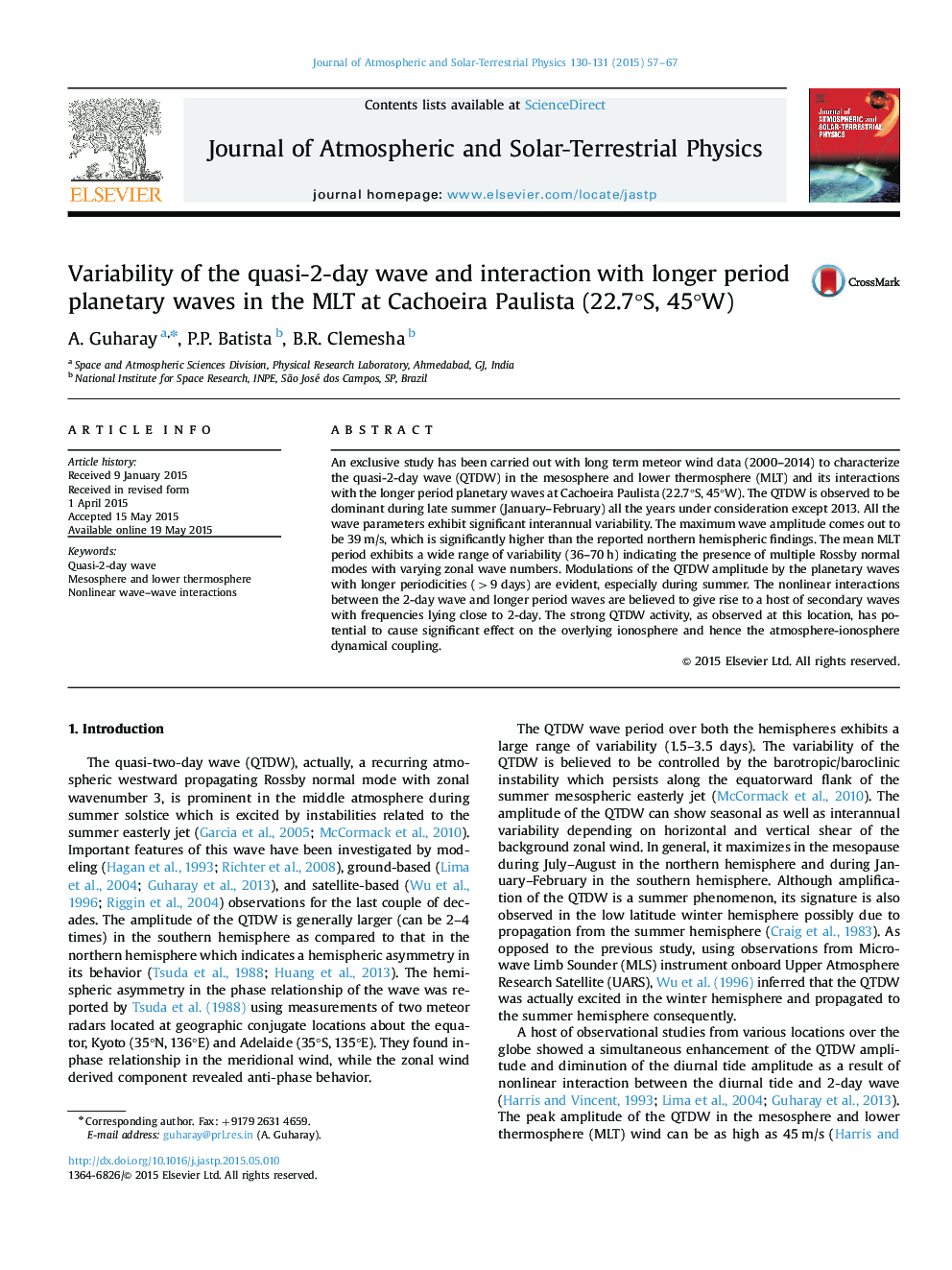| Article ID | Journal | Published Year | Pages | File Type |
|---|---|---|---|---|
| 8140021 | Journal of Atmospheric and Solar-Terrestrial Physics | 2015 | 11 Pages |
Abstract
An exclusive study has been carried out with long term meteor wind data (2000-2014) to characterize the quasi-2-day wave (QTDW) in the mesosphere and lower thermosphere (MLT) and its interactions with the longer period planetary waves at Cachoeira Paulista (22.7°S, 45°W). The QTDW is observed to be dominant during late summer (January-February) all the years under consideration except 2013. All the wave parameters exhibit significant interannual variability. The maximum wave amplitude comes out to be 39 m/s, which is significantly higher than the reported northern hemispheric findings. The mean MLT period exhibits a wide range of variability (36-70 h) indicating the presence of multiple Rossby normal modes with varying zonal wave numbers. Modulations of the QTDW amplitude by the planetary waves with longer periodicities (>9 days) are evident, especially during summer. The nonlinear interactions between the 2-day wave and longer period waves are believed to give rise to a host of secondary waves with frequencies lying close to 2-day. The strong QTDW activity, as observed at this location, has potential to cause significant effect on the overlying ionosphere and hence the atmosphere-ionosphere dynamical coupling.
Related Topics
Physical Sciences and Engineering
Earth and Planetary Sciences
Geophysics
Authors
A. Guharay, P.P. Batista, B.R. Clemesha,
